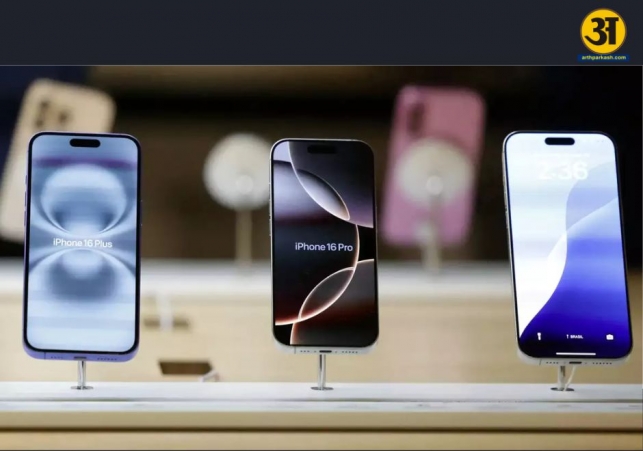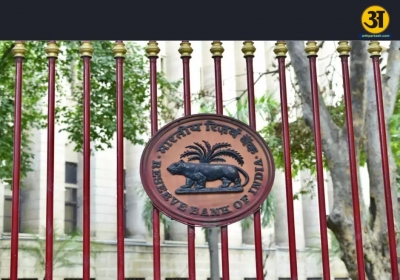
Apple Iphones may get costlier by 43% due to Trump’s tariffs
Apple iPhones may get 43% costlier due to Trump’s ‘Liberation Day’ tariffs
- By Gurmehar --
- Friday, 04 Apr, 2025
If you're a fan of Apple iPhones, you might soon need to pay a lot more for them. According to reports, prices could go up by as much as 43% due to new import tariffs introduced by U.S. President Donald Trump. These new trade rules, which include a flat 10% import tax on all foreign goods along with additional country-specific tariffs, could change global trade and make many products more expensive for American buyers.
Trump’s “Liberation Day” tariffs especially target China, which is where most iPhones are made. These new taxes may not only increase prices for consumers in the U.S. but also give an advantage to other smartphone makers like Samsung, which manufactures most of its devices in South Korea—a country facing lower tariffs compared to China.
What the tariffs mean for Apple
Apple sells over 220 million iPhones every year, and its biggest markets are the United States, China, Europe, and India. Even though Apple has been expanding production in India, the majority of its devices are still assembled in China. With a 54% total tariff on Chinese goods, Apple’s costs are expected to rise significantly.
During Trump’s earlier presidency, Apple managed to get a special waiver on similar tariffs. But this time, they didn’t get the same treatment. Analysts are warning that the new tariffs could cost the company billions of dollars. One report from Rosenblatt Securities estimates that Apple could lose up to $40 billion if it doesn't pass the costs onto consumers.
For example, the iPhone 16, which currently sells for $799 in the U.S., could cost $1,142 after the price hike. That’s a 43% increase. The higher-end iPhone 16 Pro Max could jump from $1,599 to around $2,300. Even the more budget-friendly iPhone 16e, now priced at $599, might go up to $856.
This kind of sharp price increase might turn away many buyers, especially since other brands like Samsung might be able to keep their prices lower. The report suggests that South Korea, where Samsung is based, faces only a 25% tariff—much lower than China's 54%.
It’s not just iPhones that might get more expensive. Other Apple devices, like MacBooks, could also face price hikes. Apple is under pressure to either increase prices or absorb the extra cost, which could hurt its profits.
The company’s stock price also took a big hit. Apple shares dropped by 9.3% in one day, the worst performance since the COVID-19 market crash in March 2020. Apple did not respond to media questions about how it plans to handle the situation.
According to Barton Crockett, a well-known market analyst, “This whole China tariff issue is unfolding in a very unexpected way. Last time, Apple got special treatment. This time, they’re facing the full force of the tariffs.”
ALSO READ: Price of commercial LPG cylinders reduced by ₹41, bringing relief to businesses
ALSO READ: India's natural gas demand may double by 2030, says PNGRB chairperson Anil Kumar Jain
What are Apple’s options now?
Apple could try to move more of its production to other countries like India or Vietnam. However, those countries are not safe from the tariffs either. Vietnam now faces a 46% tariff, and India is seeing a 26% rate. This adds even more pressure on Apple, which is already struggling with declining demand for new models.
Reports say that Apple’s latest feature, "Apple Intelligence"—which uses AI and even connects with tools like ChatGPT—has not been very successful in getting people to buy new devices. This is another reason Apple might be forced to raise prices to make up for lost profits.
Still, the company is working on expanding its production outside China. In the financial year 2023-24, 14% of global iPhone production happened in India. Apple also exported $6 billion worth of iPhones from India during that time, showing that it’s trying to reduce its dependence on China.
However, moving production takes time and money, and in the short term, Apple has to deal with the reality of the new tariffs.
Neil Shah, co-founder of Counterpoint Research, believes that Apple would need to increase prices by at least 30% on average just to cover the added import duties. This would definitely make iPhones less attractive to customers.
On the other hand, companies like Samsung might gain from this situation. Because Samsung manufactures in South Korea, which is subject to lower tariffs, it can offer similar products at more competitive prices.
Analysts also point out that these high tariffs could affect customer mood. Many consumers might hold off on upgrading their devices or might switch to other brands. This could hurt Apple’s market share, especially in price-sensitive markets like India.
The situation is particularly tricky for Apple because it is seen as a symbol of American innovation. Many expected that the company would again receive special treatment under Trump’s trade rules. But that has not happened this time.
President Trump says these tariffs are meant to promote "economic freedom" and protect American manufacturing. His administration believes that by making imports more expensive, U.S. companies will be encouraged to make more products within the country.
However, critics argue that such heavy tariffs could lead to inflation, trade wars, and fewer choices for consumers. They also say that companies like Apple, which rely on global supply chains, will suffer the most.
Even some Indian officials have commented on Trump’s trade policy. According to one report, an Indian official said that Trump’s new tariff plan is a “mixed bag”—not a complete failure, but not very helpful either.
The coming months will be critical for Apple. If they decide to pass on the costs to customers, they risk losing buyers. If they absorb the costs themselves, their profits will take a major hit. Either way, the company will need to find a new strategy.
Apple may try to shift more production to countries like India or Vietnam. It may also try to negotiate for special waivers again. But as of now, the company is in a tough spot.
Customers who love Apple products may soon have to make a choice: pay more or switch brands. With inflation already affecting many people, a sharp price hike on devices like iPhones may not go down well.
Meanwhile, competitors like Samsung are watching closely. With lower tariffs and similar features, they might be able to win over some Apple customers in the coming year.
The global tech market is entering a new phase, and Apple’s next moves will be closely watched by analysts, investors, and consumers alike.





